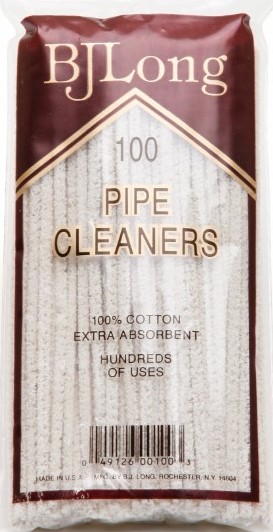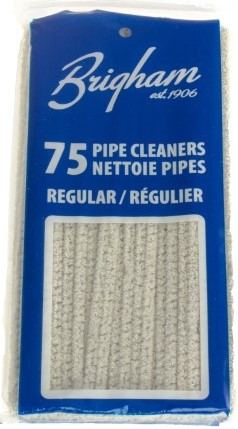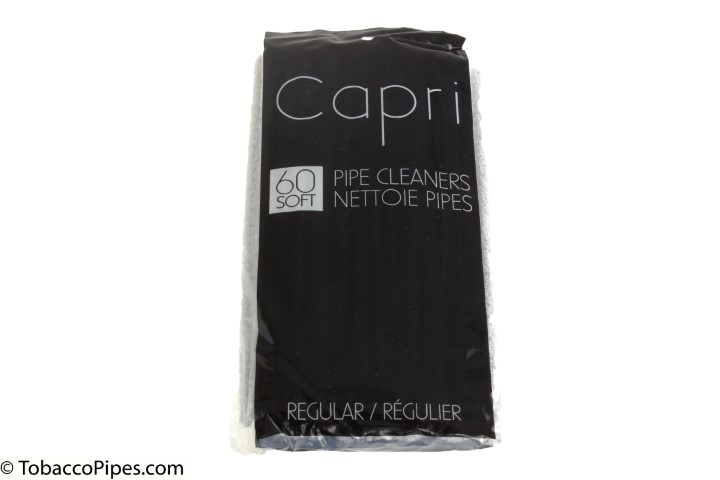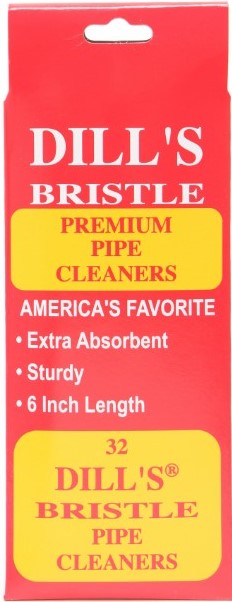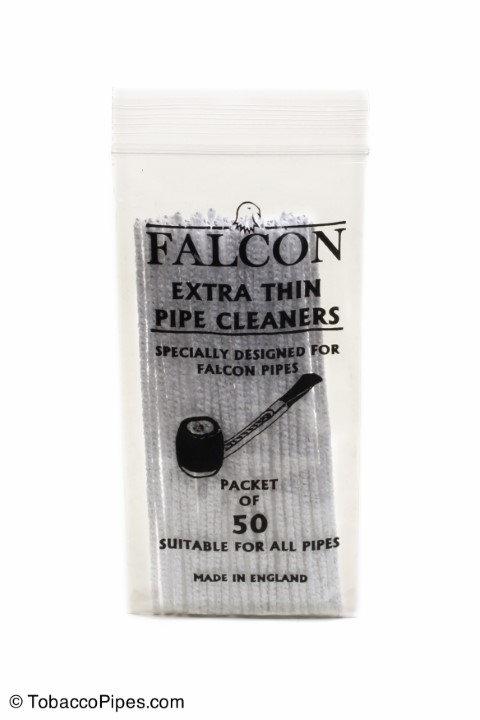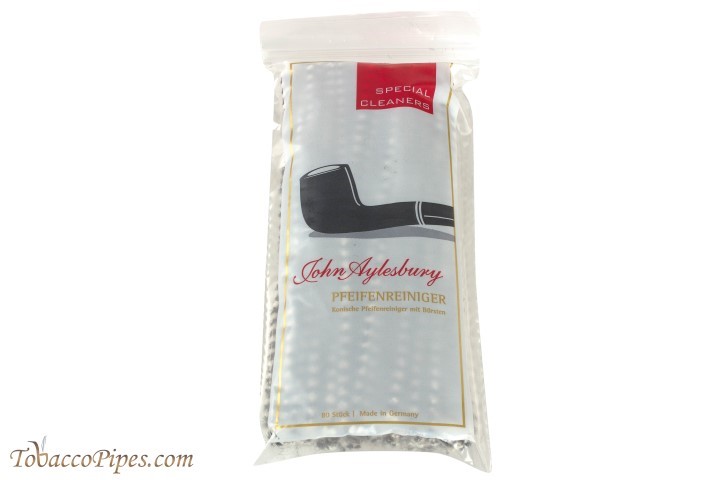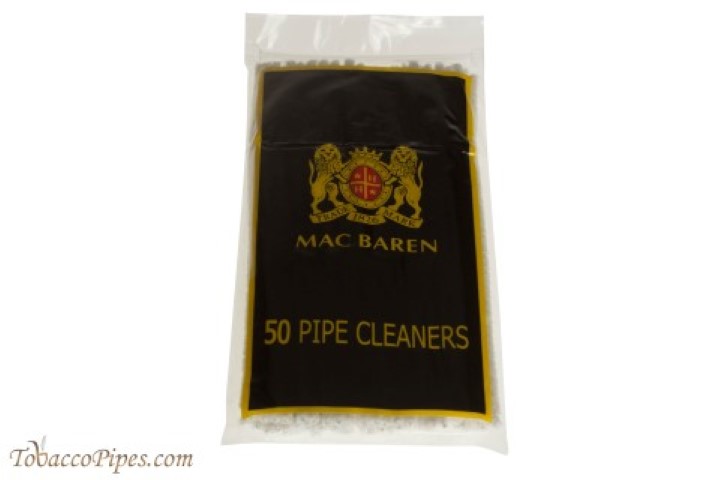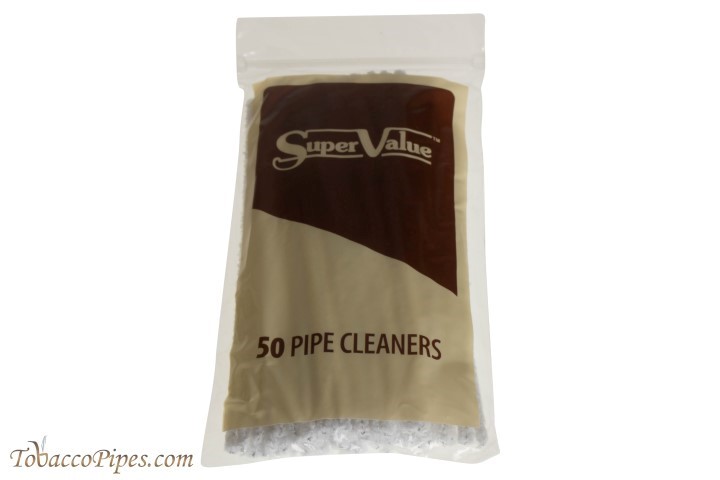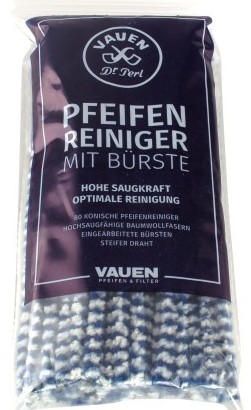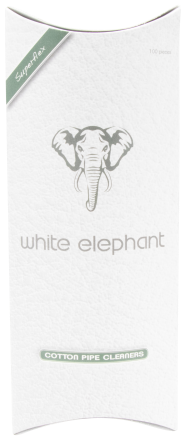The Pipe Cleaner Compendium
Posted by Matt Vandenburgh on 5th Feb 2021
Proper care and maintenance will prolong your pipe's life. After each use, you should be taking the appropriate steps to clean your pipe to have it ready for the next use. Like making your bed, brushing your teeth, or mowing the lawn, this is an important task that helps maintain your quality of life.
To clean your smoking pipe, you need the correct tools. One of these tools, the humble yet versatile pipe cleaner, will be the most used item at your disposal. The story of the origins of pipe cleaners is mostly lost to time, but we do know some information.
Find your pipe cleaners here.
At TobaccoPipes.com, we have the widest variety of pipe cleaners and brands available. We are your one-stop-shop for all your pipe cleaner needs. Are you curious about what pipe cleaner might work best for you? Feel free to scroll through our list of brands and their products.
BJ Long
The original pipe cleaner company, BJ Long, offers you a versatile and diverse list of pipe cleaners to look through. From short, bristled cleaners for a deep clean to extra absorbent 12 inch cleaners that soak up moisture, BJ Long has something for you.
We have so many BJ Long pipe cleaner variants we love; here are five of our favorites.
- The 100 count bag
- Their extra-thick, extra absorbent cleaner
- Their six-inch bristled cleaner.
- Twelve inches of pipe cleaner, perfect for churchwarden pipes.
- The bristled 12-inch cleaner, for when you need a deeper clean for your churchwarden.
Brigham
Brigham makes some very nice tobacco pipes, so it makes sense the company would want to provide you a tool to clean them too.
Brigham offers regular, bristled, extra absorbent, and churchwarden-length pipe cleaners for your needs. You can also find a pipe brush tool made by Brigham to suit any needs you might have.
Capri
The Capri brand is an homage to the Italian island of the same name. A major tourist destination, keeping the island clean and presentable is crucial for business there. The same is true for the Capri pipes, and so pipe cleaners are needed to keep a smoking pipe in good condition. What could be better than cleaning a Capri with a Capri?
Dill
Dill's Best was a famous brand of pipe tobacco that was around for almost 100 years. Founded in 1858, they were a well-respected tobacco company until cigarettes rose dramatically in popularity in the 1950s. Although the pipe tobacco has gone away, the brand lives on in their pipe cleaners. They offer two different cleaners, a bristled version for weekly use and a non-bristled variant for everyday cleaning.
Falcon
Falcon pipes are a unique take on smoking pipes. The thin stems of the interchangeable pipes make it difficult for regular sized pipe cleaners to be inserted, though. That's why Falcon makes their own pipe cleaners that are thinner and makes cleaning their pipes a breeze. We offer you the option of getting them as one pack or getting a group of six or twelve.
John Aylesbury
The John Aylesbury brand is not made by any one person but is instead a consortium of fifty different groups that came together to make great products. While they might be best known for pipe tobacco, the consortium also releases pipe cleaners. The bristled pipe cleaners are great for giving your pipe a deep clean when they are needed.
Mac Baren
In 1887, a family of Danish tobacconists founded Mac Baren. They would experiment with their tobacco and become an incredibly popular brand around the world. They later crafted their own pipe cleaners to assist smokers who would enjoy their tobacco. Mac Baren pipe cleaners are a great item to use after enjoying the brand.
Super Value
Just like the Super Value pipe tobacco, their pipe cleaners are affordable and an excellent choice for anyone that is budget-conscious. A solid choice to clean your smoking pipe, it would be hard to go wrong with Super Value.
Vauen
Vauen is a German brand that has been around since the beginning of the 1900s. They produce their line-up of pipe cleaners with their smoking pipes and their tobacco in mind. After all, the maker of a pipe and tobacco will know the best way to care for and clean their products. Vauen offers you three different pipe cleaners, a tapered cleaner that will fit in both thin and thick areas, a bristled version for the more in-depth cleaning sessions, and an extra long cleaner for large pipes like a churchwarden.
White Elephant
The White Elephant brand comes from Robert and Michael Maderholz. Robert used to make briar pipes from the mid-1940s until the mid-1980s. His son Michael went towards the accessories market instead. He started producing filters for smoking pipes and later branched out to pipe cleaners. This was the natural progression, as someone who makes filters knows the importance of a clean pipe. We offer two White Elephant pipe cleaners, the bristled deep cleaners and the regular tapered cleaners.
What did they do before the cleaner?
You must wonder what was used to clean out tobacco pipes before pipe cleaners were invented. The truth is not readily known as to exactly what was used, but the generally accepted answer is that the people who used the earliest briar pipes cleaned them out by taking a feather, usually from a chicken, to clean their shanks and stems. This would make sense since the feathers would be stiff enough to hold up to use but gentle enough not to damage the pipe.
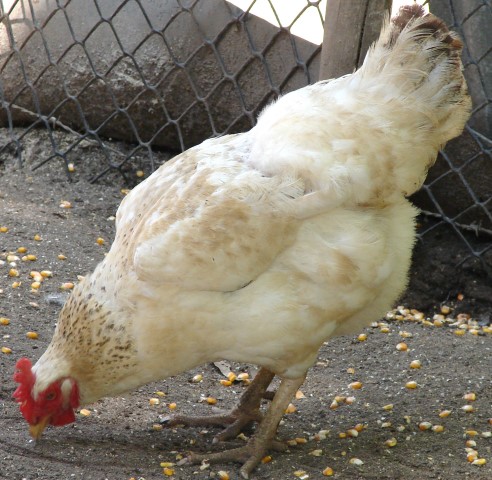
That only covers the briar pipes, though, and since those were not made until the mid-1800s, we must wonder what they did before then too. Before briar took over as the most preferred material for a tobacco pipe, it was clay that held that title.
Clay pipes were, and still are, incredibly fragile. Cleaning with any type of brush, feather, or something else would take intense skill not to damage the pipe. Multiple reports determined that the most likely way clay pipes were cleaned was by placing them in a fire pit that would burn off anything inside them. This would allow users to have a completely clean pipe for later use.
However, others doubt this to be accurate, as engulfing the clay in heat might have been more damaging to the pipe during the cleaning process than actually beneficial. This would defeat the purpose of cleaning the pipe since you can't smoke with a broken one. The more likely answer is that when the clay pipe became too dirty to use, it was discarded, and a new one was acquired, as clay pipes were cheap and made to be used and thrown away.
Inventing the pipe cleaner
As we've said, most of the information on the pipe cleaner's invention has been mostly lost to time. Here's what we do know; John Harry Stedman and his business partner Charles Angel invented them sometime in the early 1900s, in Rochester, New York. Stedman later sold the rights to pipe cleaners to the B.J. Long Company sometime after that for a good price, as it is reported this sale made him very wealthy. Stedman died in 1922, so this would reasonably place the invention comfortably before then, meaning we can logically assume pipe cleaners have been around for over one hundred years now.
Who was John Harry Stedman?
Born in Newport, Rhode Island, on November 15, 1843, John Harry Stedman was an ambitious and hard-working man. Starting as the superintendent of a marble quarry at 21, Stedman rose through the ranks of many companies, earning the position of president, vice-president, or director of at least seven companies in his life.
Stedman was also a broad thinker, using his creativity to develop numerous inventions besides pipe cleaners. One of his first innovations was the 1892 development of the "Stedman Time-Limit," an early version of modern transfer tickets.
This creativity goes to show Stedman as a forward thinker, a man that saw a problem and came up with a solution.
Okay, so what are pipe cleaners made out of?
Pipe cleaners are actually fairly simple in their components. Take two lengths of wire, twist them together with fiber between them, and you have a pipe cleaner.
The lengths of wire, called the core, would need to be tightly wound to prevent the fiber, also known as the pile, from coming loose during use.
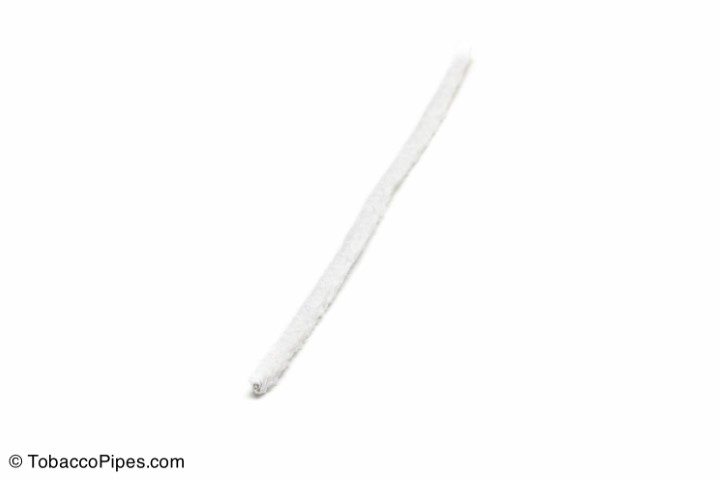
The fiber is an absorbent material, typically cotton. This helps the cleaner absorb the liquids and oils in the shank and stem of pipes that you run through.
Sometimes you need a stiffer pipe cleaner, which is when manufacturers add nylon or plastic to the pile. This stiffness allows a smoker to scrub the inside of the shank and stem more easily, useful when you need a deeper clean than the regular cleaning sessions.
Great, now how do I clean my tobacco pipe with a pipe cleaner?
There are a variety of different levels of pipe cleaning. These steps are also different based on what type of pipe you are using. You clean and care for a briar pipe far differently than you do with a meerschaum one. Both materials have cleaning practices for the stages of cleaning, though. There's after every smoke and providing thorough maintenance. Just remember to make sure your pipe has cooled down before cleaning. You will damage your pipe if you try to clean it while warm.
First, you need to know which length you will be using.
Obviously, it would be best if you used a pipe cleaner that is longer than your pipe's stem. Nothing would be more frustrating than using a pipe cleaner that doesn't reach. You would be left with uncleaned areas or gunk that gets left behind when you pull the too short cleaner out.
For short pipes like pokers, any cleaner will do the trick. Sure, anything very long can be unwieldy, but you will still be able to clean them properly.
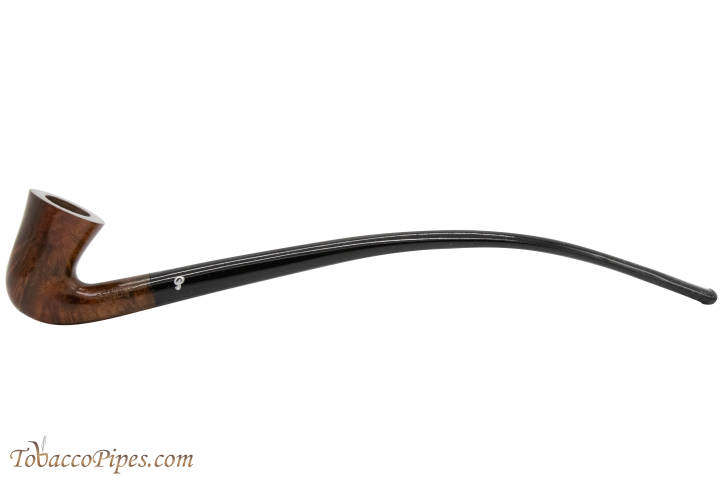
A long pipe, like a churchwarden, on the other hand, requires extra long pipe cleaners. In fact, there are pipe cleaners specially made for precisely that purpose. You will need to make sure you are using a pipe cleaner of the appropriate length to get your pipes cleaned well.
For cleaning briar tobacco pipes
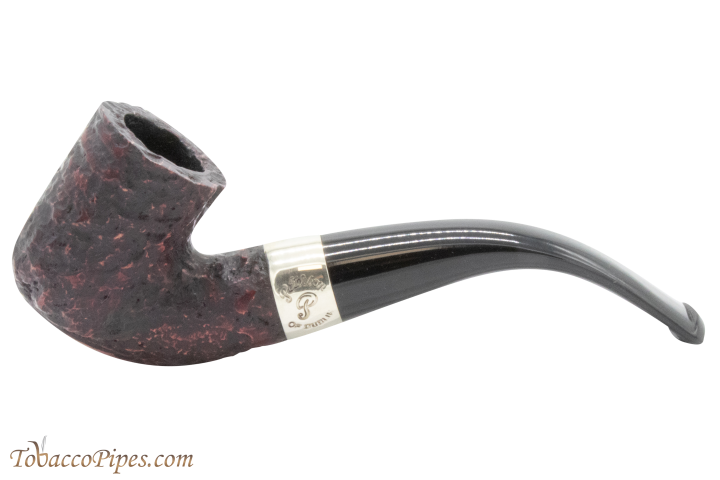
During the smoke
When smoking an unfiltered pipe, you will usually want to take care of the moisture that comes with your favorite tobacco. To get rid of that moisture, take a pipe cleaner and insert it into the mouthpiece of the smoking pipe. Push it in for a moment, and allow the cleaner to soak up that moisture. You will do this as many times as you feel is needed. Having a pipe gurgle is one of the most unpleasant things that can happen while smoking, and making sure you keep it dry will help you enjoy your smoking session even more.
After every smoke
Okay, so first, you will need to clear out your bowl. Hold the pipe by its bowl, then gently knock it against the cork in a pipe ashtray or against your hand. You want to hold your pipe by the bowl for more support. Holding it by the shank or stem can damage the pipe by not supporting the weight properly. You also should never knock it against anything other than the cork or your hand. Knocking your pipe against something hard, like a table, will damage the bowl and can crack it. Always be certain to use the right practices when starting to clean your pipe.
Once you've got the remnants of the tobacco, known as dottle, out of the bowl, it is time to use the pipe cleaners. First, you separate the stem and shank by gently twisting them apart. Take care of how you remove the stem because you can loosen it if you are too rough.
Now that you've got them separated, you can take a pipe cleaner and run it through the shank. Use a few back and forth scrubbing motions to make sure you are catching everything. Do this with a few cleaners until they come out clear. Don't be afraid to use the pipe cleaners. They are cheap, and you get a decent amount of them with each purchase.
You will repeat this step with the stem, making sure to absorb any leftover moisture that has built up there. You might find more moisture there since the stem is what you place in your mouth.
After you are done with the stem and shank, take a fresh pipe cleaner and bend it in half. You will take the folded cleaner and rub it along the inside wall of your bowl. This is a basic reaming and will help you control the cake buildup. Cake is essential to have on your pipe; it protects the wood and will prevent a burnout. You want some cake on the inside of the bowl, no more than 1 to 1.5 millimeters in thickness, about the thickness of a dime. More than that can damage your pipe or inhibit the flow. So you need to take care to remove the excess but try not to scrape it all off. This is something that will become easier to judge with practice and experience.
Now you can reconnect your shank and stem and set your pipe down to rest. Remember to rest your tobacco pipe after use properly.
If you do this daily cleaning regularly, you will help improve the overall lifetime of your smoking pipe, and you also don’t need to perform thorough maintenance as often.
For thorough maintenance
Generally, a thorough cleaning of your smoking pipe comes after a session of smoking. This is pretty much the same steps as a regular clean, but you have a little more to do.
Again, you are going to separate the shank and stem. Make sure you get rid of the dottle like you normally do. Whatever you can remove first will make this cleaning experience smoother.
Now that you've cleared out the dottle and have separated the shank and stem, you will take a cleaning solution -- usually high proof alcohol or grain alcohol, and dip a stiff pipe cleaner in it.
For beginners, you might want to ball up a paper towel and place it in the pipe's bowl to absorb any excess alcohol. This is because you do not want to have any alcohol touching the outside of the pipe. The alcohol can eat away at the finish and ruin your pipe if it does get on the outside.
When you are ready for it, you will run the cleaner through the pipe's shank. Push it through from the tenon and pull it out of the other end. This will help break up any gunk sticking to the inside of it, which you will then soak up when you run a dry pipe cleaner next. You will notice the cleaners come out covered in that dark gunk. Keep alternating between moistened cleaner and dry cleaner until your pipe cleaners look the same coming out as they did going in. Once that happens, run one final dry cleaner through to make sure you dry the shank. This will really defeat the purpose of cleaning if you leave moisture in it.
Next, you will use some bristle pipe cleaners. Wetting these with the alcohol, carefully insert it into the airhole, being sure not to get any of the alcohol on the outside. You want to brush the inside of the airhole very thoroughly, allowing the stiffer bristles to do their job. The airhole in some pipes is larger than the pipe cleaners can handle regularly, so you might need to fold it in half in order to brush the entire interior. Do the same practice with the stem, repeating wet with dry until the pipe cleaners stop looking different. Once again, run a dry cleaner to whisk away any excess moisture to ensure your pipe's health.
Once all pieces are dry, you can reconnect your shank and stem. Once connected, take a cloth and a polishing agent to keep your pipe looking fresh. Some people like using olive oil, but you need to be careful to use a very small amount of that. It might be better to use a specially made cloth for this step.
Now that you have a clean smoking pipe, you should let it rest for at least a full day, maybe two, before going back to it. This is why a good rotation of pipes is helpful for those of us who enjoy a bowl each day.
Meerschaum pipe cleaning with pipe cleaners
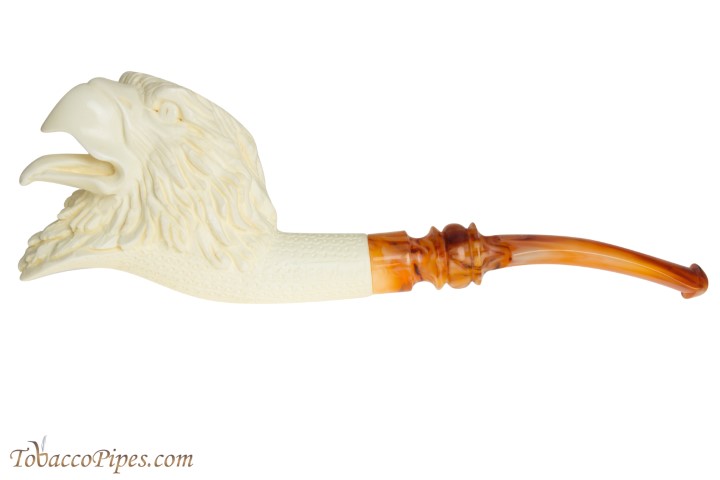
Alright, cleaning a meerschaum smoking pipe is fairly different from those made of other materials like the briar pipes we just discussed. Meerschaum makes for a more fragile smoking pipe and needs to be cleaned with extra care.
For one thing, you will not be using bristle pipe cleaners outside of extreme circumstances. They can damage the material and leave gouges that can weaken the rest of the pipe.
Another thing you will not be using will be any alcohol. Deep, deep cleaning might call for a 40-50 percent alcohol solution, but that's it. Otherwise, it is too risky to use alcohol as meerschaum is very porous, and you don't want it to absorb anything.
So how do I clean a meerschaum pipe then?
The good news is it starts similarly to the briar pipes. You must let the pipe cool completely before beginning the cleaning process. This is even more important than with a briar smoking pipe since the moisture from the smoking session will soften the meerschaum pipes and make them much more fragile. Letting the pipe cool will allow the pipe to dry off a little bit, making it safe to begin the cleaning process.
The first thing you will do is to remove any leftover cake from the bowl. Start this the same way you would with a briar pipe, by knocking it against the cork of a pipe ashtray or your hand. Once the dottle is gone, you will want to brush away anything that is still there. You are going to do this by folding a pipe cleaner in half and using it to wipe the inside of the bowl gently. This will help get rid of the cake, something good in a briar but damaging for a meerschaum pipe. You need to remove the cake entirely because it expands with heat and can crack the bowl of a meerschaum pipe.
Once you have taken care of the bowl, it is time to take care of the stem. Again you are going to separate the stem and shank. In a meerschaum pipe, there is a particular way to do this. You need to rotate the stem clockwise while pulling to remove. Always remember to do it clockwise, or you risk loosening the mortise and damaging the pipe.
Since the stem will likely be made out of the same material, that cleaning process will be the same.
The difference comes with the rest of the pipe. Because meerschaum is so absorptive, it is easy to carve. This is great for the sculptors that make some genuinely magnificent looking pipes. This is not so great during the cleaning process. When running a pipe cleaner through the shank, you should be careful since being too vigorous with the cleaner can wear away at the bowl, leaving thinner spots there that are much easier to crack and ruin the pipe.
Once you are done with this, leave the pipe to dry. A meerschaum smoking pipe does not need to rest as long as a briar, so you will be able to enjoy a bowl more frequently. However, you should make sure to give it enough rest to dry out and avoid moisture damage.
Alternative uses for pipe cleaners
Now that you have your pipes all cleaned up, you will likely find plenty of spare pipe cleaners. Sure, you can save them for the next cleaning, and you should, but there are plenty of other uses for a pipe cleaner other than the initially designed use.
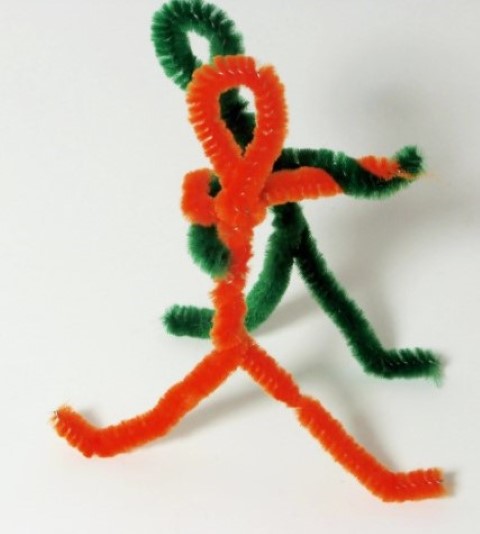
Of course, your first introduction to pipe cleaners was likely not for your smoking pipes. Many people saw pipe cleaners well before they were allowed to purchase tobacco or a tobacco pipe. Your first experience with pipe cleaners was likely in school, during arts and crafts. There are plenty of pipe cleaners that are manufactured in various colors, some specifically made for decoration. There are some great designs you can create with them, perfect for spending time with your children or even just to embrace your artistic side.
There are other practical uses too. For instance, pipe cleaners can double as twist ties. After all, they are basically the same thing, a thin wire covered in a softer material. Just fold and twist, you will have things securely tied in no time.
One great use for pipe cleaners would be for organization. Especially useful with cleaners of different colors, you can bunch items together and wrap a pipe cleaner around them, helping you differentiate your things. One example of this would be with wires and cables. If you are moving or even just setting something up in your home, having a jumble of cables can be frustrating to handle. If you keep all the wires for each item sorted and bound by a different colored pipe cleaner, it will make life that much more comfortable when trying to deal with things. So wrap your tv wires with a blue cleaner, your game systems with a red cleaner, your blu-ray player with a green one, and your sound system with a black one. This will make your space so much neater and more organized.
In an extreme example, you can use pipe cleaners as emergency shoelaces. In a pinch, you can lace your shoes together with these cleaners, and they will hold together until you are able to go out and get proper shoelaces again. You will not get the best knots from this, but it will definitely be a good option in the event your laces unexpectedly break.
Pipe cleaners are also a great option to help you get a better grip on tools. Wrap them around the handle of the device you need help holding, and you have a softer grip, one that will more readily conform to your hand. You will find items slipping from a loose grasp not happening to you as much anymore.
One more idea we will mention is using them with your clothing. Try wrapping them around your hangers to give your shirts and jackets something to cling to. This will help prevent clothing from slipping off and crumpling on the floor.
Obviously, with an item as versatile as a pipe cleaner, there are practically infinite uses for an imaginative mind. You will never run out of something to do with them, and since they are so affordable, having plenty of them to do the job should not be difficult.
In conclusion
From humble beginnings, the pipe cleaner has been around for at least one hundred years. What started out as a useful item to clean tobacco pipes became an item that has multiple functions. From all accounts of the man, John Harry Stedman appears to have been a futurist. However, we doubt that even he would have foreseen how versatile an object he created. So next time you find yourself cleaning a smoking pipe, take note of the simple yet brilliant tool you are using.


